-Woodstock by Joni Mitchell
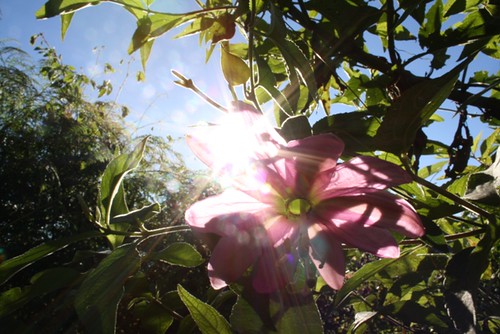

My friends Ryan and Jenn travelled through South America a few years ago and visited an ecological farm called Sacred Sueños. Jenn wrote an article about Permaculture farming in a Canadian magazine. Ryan recommended the place to me so, with my bike safely locked up in a garden shed at the base of the mountain, I hiked the two hours up the mountain to the farm.

Yves Zehnder bought the land here 7 years ago. He is a ginger haired Canadian driven here by his frustration with modern society. He put up his tent and set about trasforming the 10 hectares of land. The soil was very low quality, years of slash-and-burn farming had left only bracken fern. He built himself an adobe brick house which now acts as the kitchen and communal area for the volunteers like me who come to live and work here for a few weeks.
In his first few years the local Ecuadorians thought this young gringo who had bought land would make an excellent husband for their daughters. They would bring their loveliest seventeen-year-olds which he would politely decline. Rumours spread that he was gay. One day, after a hard day building the kitchen, Yves decided it would be fun to strip naked, jump in the mud pit, used to make the earth bricks, and splash around and make monkey noises. Perhaps too much time alone on a mountainside was to blame. Unbeknownst to him a local farmer was on his way with another angelic young daughter. They got the shock of their lives and Yves pulled on his jeans. His muddy legs stuck to the inside.
Seven years on and things are in a little more order. Yves and his partner Jenn are live at the farm and a stream of volunteers come up to help out for a few weeks. The farm has been designed along permaculture principles and aims to become self-sufficient and sustainable. All sorts of trees are in the ground such as Hazelnuts, Avocados and Peach, but it will be several years still till they reach maturity. The garden is fairly fruitful especially with salad, beans and grenadilla. I spent 3 weeks digging trenches, building trails and steps, building new raised beds and helping to build a new water tank. Here is a summary of the kind of thing they are doing.
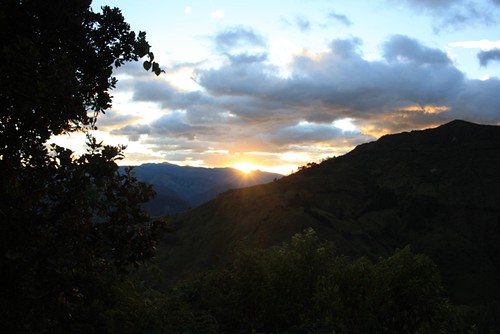
Improving soil
Chicken Tractor (Chickens are kept in a movable coop. Their droppings help to improve soil fertility)
Humanure (The result of the composting toilet. One of the best fertilizers on the farm)
Compost (Layers of dry grass, donkey shit, kitchen scrap, ash, fresh green matter and more donkey shit. Turned infrequently in the hope that nutrients don't escape to the air)
Compost tea (Fish beans and comfrey mixed in water or urine. Water soluble nutrients are more likely to form in a liquid, bit smelly though)
Planting native species
Planting dynamic accumulators such as nitrogen fixers.
Heavy prunning
Protecting with mulch, contour ditches, bunds and tree roots (to stop all that good soil being washed down the mountian).
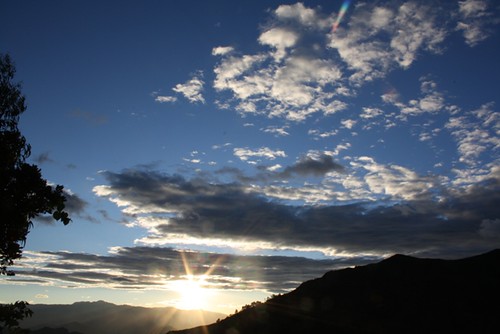
Building
Cob - A building technique using clay, sand and earth bonded together with straw fibres tradditionaly but recycled plastic strips can be used. The dormitory where I stayed had a "Bodega" built from cob with a wooden structure above.
Adobe bricks - Tradditional building material in South America. Bricks are made from clay, sand, earth and water and dried in the sun. The communal kitchen is built from adobe.
Earthbags - Another technique using earth, this time in polypropelene bags (3 cents each) which are filled and rammed in place. Sucessive layers are tied with string and help in place with barbed wire. The water tanks are built in this way.
Natural timbers and rocks.
Cement, Tin roofs, transparent plastic sheeting and lumber from down the hill
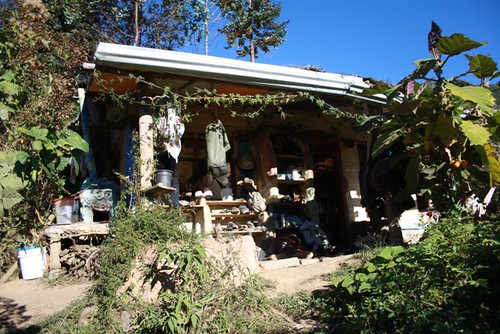
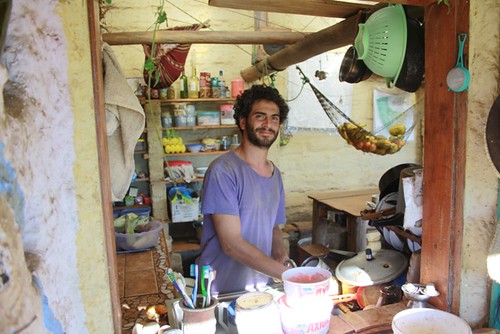
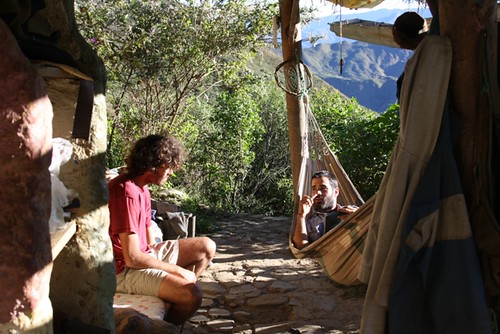
Animals
Donkeys and horse (used for logistics, i.e. for carrying food/gas/people/building materials up the hill and thier shit is collected to go in the compost)
Goats (Yves runs a small goat cheese business so he can afford to pay the weekly $25 for food)
Dogs (companionship and security)
Cats (companionship and pest control)
Chickens (eggs and soil fertility)
Bees (polonation, in the future hopefully honey, wax and propolis)
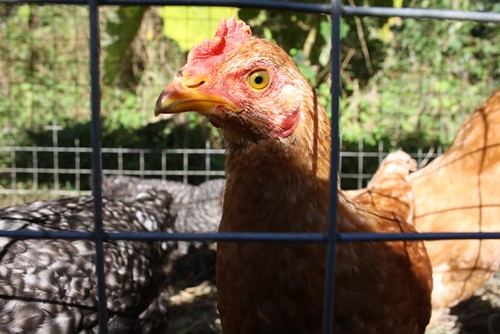
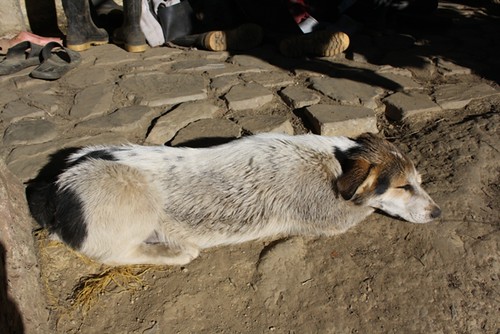


Human Services
Toilet (Composting toilet for poo. Essentially just a glorified bucket. Sited with great views of the mountian. A scoop of sawdust (which they get for free) goes over the shit. The bucket is emptied into a pile where it decomposes into a firtile soil called Humanure. Wee on trees, or collected for compost tea).
Shower (A lovely outside heated shower with a coil of black pipe that heats up in the sun)
Laundry (bucket and washboard. There is also another spiral of black pipe to heat up the washing water.)
Cooking (gas bottles from down the hill)
Food (some fruit and veg from the garden plus $25 a week each for food from the market in Vilcabamaba)
Light (candles and headlamps)
Computer (solar charged)
Batteries (charged down the hill)
Cell phone (solar charged)


Stimulus
Music (mp3 players and a solar powered amp and speakers)
Musical instruments
Books (well stocked library)
Animals
Radio
Games box
Firepit
Conversation and stories
Recycling
Food scraps and peels is used for compost or animal feed.
Paper is burned.
Plastic is reused where possible. Milk and oil containers are turned into planters. Other plastic bags are either reused or cut into strips to be used in cob building.
Only the most scanky of stuff, and non-rechargable batteries, go down the hill.
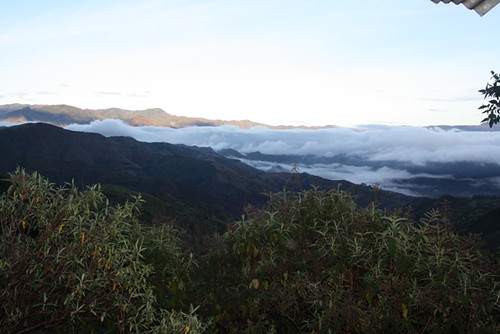
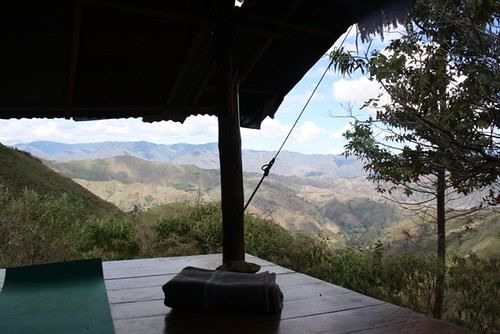

Water
Water tanks
Dammed creeks
Drainage ditches and contour bunds
Ponds
Gutters to collect rain off roofs which is then diverted to plants.
Mulch
Micro catchment (when a new tree is planted, ditches are dug to provide proper drainage)
Greywater system (waste water from washing up, showering, laundry etc is used for irrigation)
Dry toilet (so no water lost in flushing)
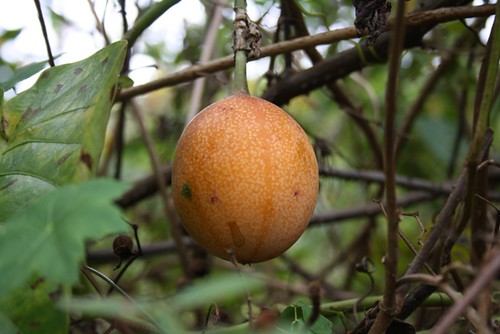
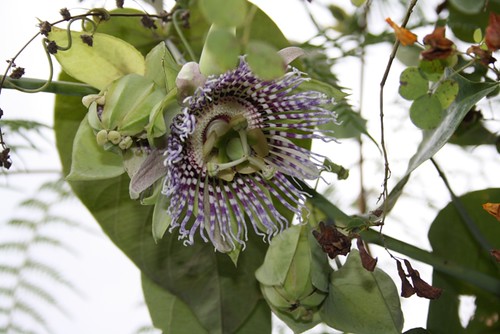

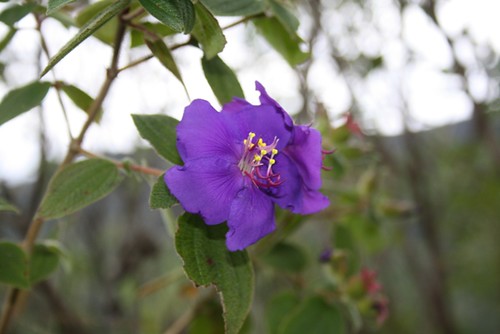
Sucessful Plants
Naranjilla (for juice)
Granadilla
Tomate de arbol (for juice)
Scarlet runner beans (causes lots of farting)
Lettuce and salads
Herbs (oragano, thyme, basil, rosemary, lemon verbatim, mint)
Aloe
Raspberries
Blackberries
White carrots
Tomatoes in greenhouse and outdoors
Uvillas
Capeberry
Kale
Zuccini
Tarro root
Laconi
Zambo (a type of squash)
Gardening Methods
Grow from seed
Biodiversity to combat pests and disease
Hand watering
Free labour from volunteers
Pollycropping
Plant with moon
Future Ambitions
Self-sufficiency
A small permanent community
Reforestation
Edible forest garden (trees are all too small still)
Juice bar (for sale to passing horse riders and hikers)
Herbal medicine for use and sale
Preserves for use and sale
Honey and bees wax
Social Projects (Yves set aside the most firtile part of the the land he owns for a future project. He invisages that a women's refuge, a rehab clinic or something like that might be built and run by future residents.)
Internships (They hope to get people willing to stay for several months (rather than a few weeks) so they can take on more responsibility)
Free festivals (primarily just to get more shit for humanure)
Free permaculture design courses for Ecuadorians subsidised by pricey courses for westerners.
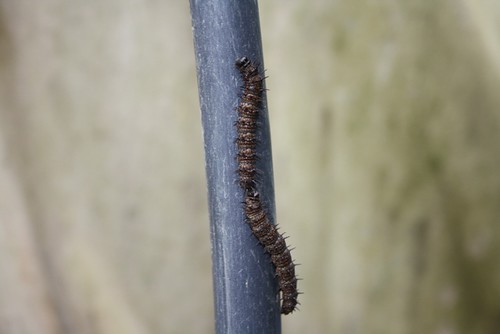
Challenges and Setbacks
Doing everything manually (screws up your back and takes longer but is free (especially with help of volunteers))
Poor soil
Unpredictable climate
Runoff
Mosquitos
Cultural separation (Jenn is having a hard time learning Spanish even after living here for 2 years as the volunteers mostly speak English)
Isolation
Social dynamics (During my stay there were a few moments of friction between Jenn and other volunteers. I think she would freely admit that at times she is not the easiest person to get along with. At one stage, when I was amidst a frustrating plumming dilema (I put the faucet on backwards) this included me, but when she made us both a vodka and freshly squeezed orange juice our differences where set aside.)
Transitory nature of community (It is hard for Jenn and Yves to invest much effort into getting to know people who will be gone in a few weeks.)
Exposure to wind, rain, sun.
Limited personal funds (Jen has a dwindling savings account and Yves is, more or less, broke).
Distance from medical assistance
Mistakes
No refrigeration
Animals (unpredictable)
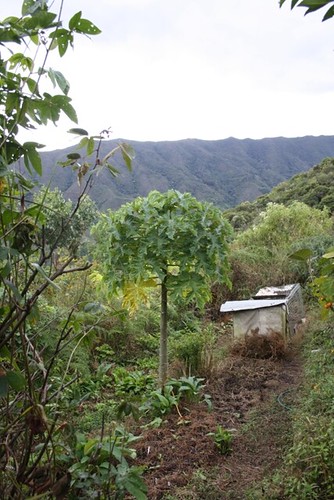
Best things about living here
Healthy diet
Plenty of exersize
Beautiful setting
Meeting lots of interesting people
Closer connection to food/land/environment
Not wasteful
Learning/experimenting
Sunsets
Donations from people inspired by the project. Land, books, seeds, tools, clothes, animals.
Tranquility
No city bullshit, usually
Waterfall
No boss or 9 to 5. (7 to 7 instead!)
Stars
Animals
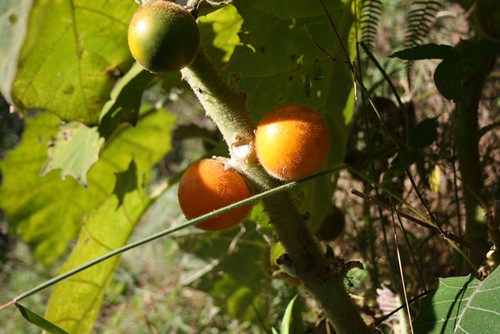
This is awesome Pete! In fact its terrific! I love your photos too....hope your well in the land of cycles x
ReplyDelete